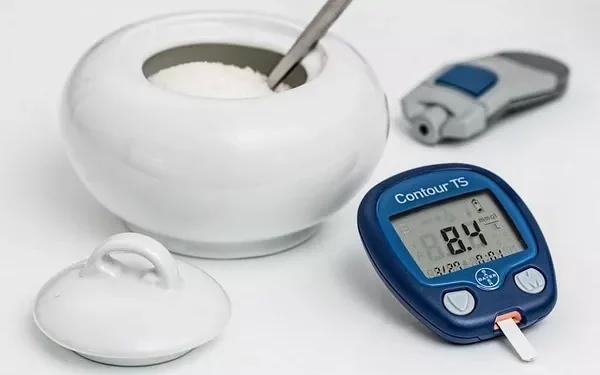Hyperglycemia, or high blood sugar, is a hallmark of diabetes and other metabolic disorders. When blood glucose levels remain elevated for extended periods, the condition is termed chronic hyperglycemia. Chronic hyperglycemia can have detrimental effects on nearly every organ in the body, leading to severe complications if not managed properly. This article delves into the nature of chronic hyperglycemia, its causes, symptoms, complications, and management strategies.
What is Chronic Hyperglycemia?
Chronic hyperglycemia refers to consistently high blood glucose levels over a prolonged period. In non-diabetic individuals, normal fasting blood glucose levels range from 70 to 99 mg/dL, and postprandial (after meal) levels typically remain below 140 mg/dL. For diabetic patients, chronic hyperglycemia is defined as fasting blood glucose levels exceeding 126 mg/dL and postprandial levels above 200 mg/dL. Glycated hemoglobin (HbA1c) levels, which reflect average blood glucose levels over the past two to three months, are also used to diagnose and monitor chronic hyperglycemia, with levels above 6.5% indicating diabetes.
Causes of Chronic Hyperglycemia
Diabetes Mellitus
Chronic hyperglycemia is most commonly associated with diabetes mellitus, a group of metabolic disorders characterized by impaired insulin secretion, insulin action, or both. The main types of diabetes include:
- Type 1 Diabetes: An autoimmune condition in which the body’s immune system attacks and destroys insulin-producing beta cells in the pancreas. This results in little to no insulin production, leading to chronic hyperglycemia.
- Type 2 Diabetes: A condition characterized by insulin resistance and relative insulin deficiency. The body’s cells become less responsive to insulin, and the pancreas may not produce enough insulin to compensate, resulting in elevated blood glucose levels.
- Gestational Diabetes: A form of diabetes that develops during pregnancy and is characterized by insulin resistance and high blood sugar levels. It usually resolves after childbirth but increases the risk of developing type 2 diabetes later in life.
Other Endocrine Disorders
Certain endocrine disorders can lead to chronic hyperglycemia, including Cushing’s syndrome (excess cortisol production), acromegaly (excess growth hormone production), and hyperthyroidism (overactive thyroid gland). These conditions can impair insulin action and increase blood glucose levels.
Medications
Some medications can cause chronic hyperglycemia as a side effect. Examples include glucocorticoids (used to treat inflammatory conditions), certain antipsychotics, and beta-blockers. These medications can affect glucose metabolism and insulin sensitivity.
Lifestyle Factors
Poor dietary habits, physical inactivity, and obesity are significant risk factors for developing chronic hyperglycemia, particularly in the context of type 2 diabetes. Diets high in refined sugars and unhealthy fats can contribute to insulin resistance and weight gain, while a sedentary lifestyle further exacerbates these effects.
Symptoms of Chronic Hyperglycemia
The symptoms of chronic hyperglycemia can vary depending on the severity and duration of elevated blood glucose levels. Common symptoms include:
Frequent Urination (Polyuria)
High blood glucose levels cause excess glucose to be excreted in the urine, leading to increased urine output and frequent urination.
Increased Thirst (Polydipsia)
The loss of fluids through frequent urination triggers thirst as the body attempts to replenish lost fluids.
Unexplained Weight Loss
Despite increased hunger and food intake, individuals with chronic hyperglycemia may experience weight loss due to the body’s inability to utilize glucose for energy, leading to the breakdown of fat and muscle for fuel.
Fatigue
The lack of available glucose for energy can result in persistent tiredness and fatigue.
Blurred Vision
High blood glucose levels can cause swelling of the lens in the eye, leading to blurred vision.
Slow-Healing Sores or Infections
Chronic hyperglycemia can impair the immune system and blood circulation, making it harder for the body to heal wounds and fight infections.
Numbness or Tingling in the Extremities
Nerve damage (neuropathy) caused by prolonged high blood glucose levels can result in numbness or tingling sensations, particularly in the hands and feet.
Complications of Chronic Hyperglycemia
Chronic hyperglycemia can lead to a range of complications, many of which are serious and potentially life-threatening. These complications are broadly categorized into microvascular and macrovascular complications.
Microvascular Complications
- Diabetic Retinopathy: Chronic hyperglycemia can damage the blood vessels in the retina, leading to vision problems and, in severe cases, blindness.
- Diabetic Nephropathy: High blood glucose levels can damage the kidneys’ filtering system, leading to kidney disease or failure.
- Diabetic Neuropathy: Nerve damage caused by chronic hyperglycemia can result in numbness, pain, and weakness, particularly in the extremities. It can also affect autonomic nerves, impacting functions such as digestion, heart rate, and blood pressure regulation.
Macrovascular Complications
- Cardiovascular Disease: Chronic hyperglycemia increases the risk of developing cardiovascular diseases, including coronary artery disease, heart attack, and stroke. High blood glucose levels contribute to the formation of plaques in blood vessels, leading to atherosclerosis (hardening and narrowing of the arteries).
- Peripheral Artery Disease: Reduced blood flow to the limbs due to narrowed arteries can cause pain, ulcers, and in severe cases, lead to amputations.
Other Complications
- Diabetic Ketoacidosis (DKA): A life-threatening condition that occurs when the body starts breaking down fat for energy due to a lack of insulin, producing ketones that accumulate in the blood and urine, leading to acidosis.
- Hyperosmolar Hyperglycemic State (HHS): A serious condition characterized by extremely high blood glucose levels and severe dehydration, more common in type 2 diabetes.
Management of Chronic Hyperglycemia
Effective management of chronic hyperglycemia involves a combination of lifestyle modifications, pharmacological treatments, and regular monitoring. The primary goals are to maintain blood glucose levels within target ranges, prevent complications, and improve overall quality of life.
-
Lifestyle Modifications
- Diet: A balanced diet rich in whole grains, fruits, vegetables, lean proteins, and healthy fats can help regulate blood glucose levels. Monitoring carbohydrate intake and opting for low-glycemic index foods can prevent spikes in blood sugar. Consulting a registered dietitian or nutritionist can provide personalized dietary recommendations.
- Physical Activity: Regular physical activity improves insulin sensitivity and helps manage blood glucose levels. Aiming for at least 150 minutes of moderate-intensity aerobic exercise per week, along with resistance training, can be beneficial.
- Weight Management: Achieving and maintaining a healthy weight through diet and exercise can significantly improve blood glucose control and reduce the risk of complications.
Pharmacological Treatments
- Oral Medications: Several classes of oral medications are available to help manage chronic hyperglycemia, including metformin, sulfonylureas, DPP-4 inhibitors, SGLT2 inhibitors, and thiazolidinediones. These medications work through various mechanisms to lower blood glucose levels.
- Insulin Therapy: For individuals with type 1 diabetes and some with type 2 diabetes, insulin therapy is essential. Various forms of insulin (rapid-acting, short-acting, intermediate-acting, and long-acting) can be used to mimic the body’s natural insulin response and maintain blood glucose levels within target ranges.
- GLP-1 Receptor Agonists: These injectable medications stimulate insulin secretion, inhibit glucagon release, and slow gastric emptying, helping to control blood glucose levels.
Monitoring and Follow-Up
- Self-Monitoring of Blood Glucose (SMBG): Regular monitoring of blood glucose levels using a glucometer can help individuals track their blood sugar and make necessary adjustments to their treatment plan. Continuous glucose monitoring (CGM) systems provide real-time data and trends, offering a more comprehensive view of blood glucose patterns.
- Regular Medical Check-Ups: Routine visits to healthcare providers for blood tests, including HbA1c, lipid profiles, and kidney function tests, are essential for monitoring overall health and preventing complications. Eye exams, foot exams, and screenings for cardiovascular health are also crucial components of comprehensive diabetes care.
See also: What’s the Link Between Hyperglycemia and Dehydration
Conclusion
Chronic hyperglycemia is a complex condition with far-reaching effects on the body. Understanding its causes, symptoms, and complications is crucial for effective management and prevention. Through lifestyle modifications, pharmacological treatments, and regular monitoring, individuals with chronic hyperglycemia can achieve better blood glucose control, reduce the risk of complications, and improve their overall quality of life. Healthcare providers play a vital role in guiding patients through personalized treatment plans and providing the necessary support to manage this challenging condition.
Related topics:
Why Does Hyperglycemia Cause Altered Mental Status

























